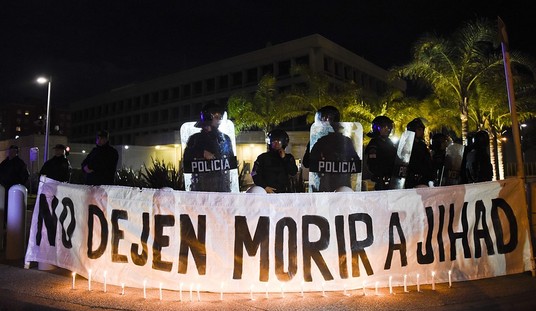Dëvar Torah – Parashath Vayaqhél-Pëqudei (Exodus XXXV, 1 — XL, 38)
Finally, after months of intense and loving labor, the Mishkan was completed and filled with the objects that had been so painstakingly made for it. The work had acquired the Divine seal of approval:
Vayëhi bachodesh harishon bashana hashénith bë’echad lachodesh huqam haMishkan.
And it was that in the first month, in the second year, on the first of the month the Mishkan was erected (XL, 17).
Vayëchas he‘anan eth Ohel Mo‘éd uchëvod Ha0Shem malé’ eth haMishkan.
And the cloud covered the Tent of Assembly and the glory of Ha-Shem filled the Mishkan (ibid., 34).
The great luminary of 19th century German Jewry, Rabbi S. R. Hirsch, notes the similarity between what happened at the inauguration of the Mishkan and what happened at Sinai, in that there we also find:
Vayishkon këvod Ha-Shem ‘al Har Sinai.
And the glory of Ha-Shem rested on Mt. Sinai (ibid., XXIV, 16).
Further, at Sinai Moshe was not called into G-d’s presence until the seventh day after the cloud had rested (ibid.), and in our parasha, too, we read:
Vëlo’ yachol Moshe lavo’ el Ohel Mo‘éd ki shachén ‘alav he‘anan uchëvod Ha-Shem malé’ eth haMishkan.
And Moshe could not come to the Tent of Assembly because the cloud was resting on it and the glory of Ha-Shem filled the Mishkan (ibid., 35).
In Leviticus I, 1 we first find G-d calling Moshe to Him. Rabbi Hirsch also reminds us that King David took note of this similarity:
Ad-nai vam Sinai baqodesh.
My L-rd is among them, as at Sinai, in holiness (Psalms LVIII, 18).
King David thus puts his finger on the quality of holiness as associated with G-d’s imminence in Israel, and as we have already seen, both the Mishkan (ibid. XXV, 8) and the later Temple in Jerusalem are called miqdash (“holy place”). The obvious point is that Israel, as G-d’s servant on Earth, must lead hallowed lives if G-d is to dwell in our midst. The point of the comparison would thus seem to be the presence of G-d at the center of holiness. The Torah was given at Sinai, and so it was naturally there that the këvod Ha-Shem “dwelt” (vayishkon). What had happened to bring about its “transferral” to the Mishkan?
The source of qëdusha in this world, the “instruction manual” for that hallowed life Israel is enjoined to lead, is of course the Torah. After the Torah was given on Mt. Sinai, that mountain became the focal point of qëdusha in this world, and so it was there that the cloud appeared and the këvod Ha-Shem came to rest. The purpose of building the Mishkan was vëshachanti bëthocham: “ … and I shall dwell in their midst” (ibid.).
To that end, it was the Mishkan, and the kohanim and Lëviyyim who served in it, that would now become the center of Torah, symbolized by the Luchoth, the tablets which Moshe had brought down from Sinai and now placed in the aron haqodesh, the special gold-plated box built to hold them. This would reside in the Qodesh haQodashim, the “Holy of Holies,” which was the heart of the Mishkan.
Later the Sanhedrin, source of rulings, instructions, and corrective decrees for all of Israel, took its place near the Miqdash. When the Temple was built in Jerusalem, the Sanhedrin was located in the Lishkath haGazith, the “Office of Hewn Stone,” within the Temple precincts. From there, as the prophet tells us, their instructions reached all of Israel:
Ki miTziyyon tétzé’ Torah udëvar Ha-Shem mIrushalayim.
For from Zion goes forth Torah, and the word of Ha-Shem from Jerusalem (Isaiah wII, 3).
Our parasha tells us that Moshe placed the Torah in the aron in the following words:
Vayiqqach vayittén eth ha‘éduth el ha’aron.
And he took and placed the testimony into the box (Exodus XL, 20).
This was in response to the command:
Vënathatta el ha’aron eth ha‘éduth asher ettén élecha
And you shall place into the box the testimony which I am giving you (XXV, 16).
Why do these verses use the peculiar term ‘éduth for the Torah? Rashi provides us with one answer: “Because [the Torah] is for testimony between Me and you,” i.e. of the eternal Covenant. For this reason, adds the Rashbam, the tablets are called Luchoth haBërith: “Tablets of the Covenant.”
Rabbi Yoséf Albo, author of the classic Jewish philosophical work Séfer ha‘Iqqarim, offers another answer, as relevant today as when he first proposed it 600 years ago (III, 21):
The Torah is called ‘éduth to say that it must be understood like the testimony of witnesses. When witnesses testify we do not say, “Let us change the time,” or give an interpretation to their testimony such that they will not be found guilty of perjury. If they testify that Rë’uvén killed Shim‘on on the first of the week and are proven wrong, we do not say, “Let us re-interpret the testimony so that they will not be false witnesses.”
Thus, Ha-Shem’s Torah is called ‘éduth because the mitzvoth are properly understood kifshatan (“according to their simple meaning”) and not figuratively or allegorically to say that there are conditions or time limitations which are not mentioned in them.
Therefore did David say, ‘Éduth Ha-Shem ne’emana: “Ha-Shem’s testimony is faithful” (Psalms XIX, 8), i.e. true kifshatah, as written. And the burden of proof is upon him who comes to interpret or change it, saying, for example, that the prohibition of pork was temporary, or that the important thing in the Torah is belief in the heart and not performance of the mitzvoth, for he cannot abolish the mitzvoth or say that there is a condition or time which is not mentioned.
This is what the Psalmist meant when he said Karu li zédim shachoth asher lo’ këThorathecha: “The wicked have dug me pits which are not according to Your Torah” (ibid., CXIX, 85). He goes on to explain that the pits are what they say, that kol mitzvothecha emuna bilvad: “[A]ll of Your mitzvoth are only a matter of faith” (ibid., 86). With this, sheqer rëdafuni: “[T]hey have pursued me with lies” (ibid.). Therefore, he cries ‘Ozréni! Kim‘at killuni ba’aretz: “Help me! They have almost destroyed me on Earth” (ibid., 86-87); but nonetheless va’ani lo’ ‘azavti fiqqudecha: “and I have not abandoned Your commandments” (ibid.).
In short, the Torah is an absolute, is eternally relevant, and cannot be tampered with to match changing fashions or current convenience. Man’s task is to make his times match the Torah, not vice versa. Only thus can the Torah be the eternal ‘éduth to the covenant between G-d and Israel.
This week we read a special parasha dealing with the para adumma, the red cow whose ashes mixed with water are used to purify the spiritually defiled (Numbers XIX, 1-22). Since that is so, the introduction of the parasha is mystifying: Zoth chuqqath haTorah (“This is the law of the Torah”), where we would expect to find zoth chuqqath hapara (“this is the law of the cow”).
The truth is that the entire mitzva of para adumma is mystifying; the elaborate ritual procedure detailed in the parasha is obscure, and seems to modern eyes like so much mumbo-jumbo, G-d forbid. Indeed, the midrash tells us that this is the one mitzva whose underlying reasons even King Shëlomo, wisest of all men, never penetrated. It must simply be accepted as a decree from on high, since it cannot be rationally understood (cf. Rashi ad loc.).
But that telling phrase, chuqqath haTorah, is a reminder to us that in reality all of Torah is like that. Human reason and analysis have their place, and it is an honored one: Talmud Torah këneged kullam: “Torah study is equivalent to all [of the other mitzvoth],” the mishna tells us (Pé’a I, 1). But we must know our limitations and not try to be too clever by half, analyzing, clarifying, and explaining Torah until we have distorted it out of all resemblance to what we received at Sinai. If we treat it as ‘éduth and recognize that, with all its depths, it plainly means what it says, we cannot stray far.









Join the conversation as a VIP Member